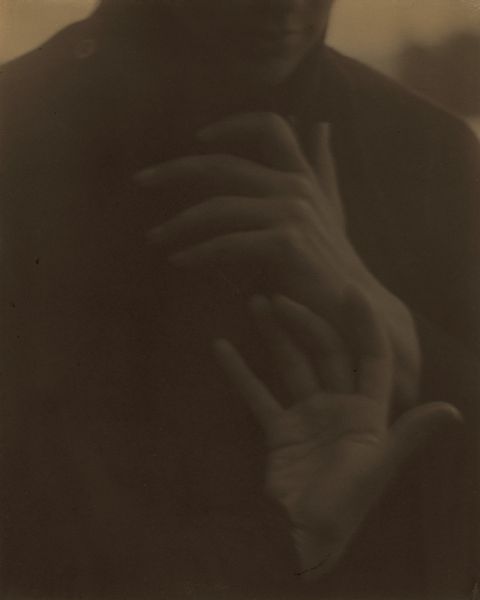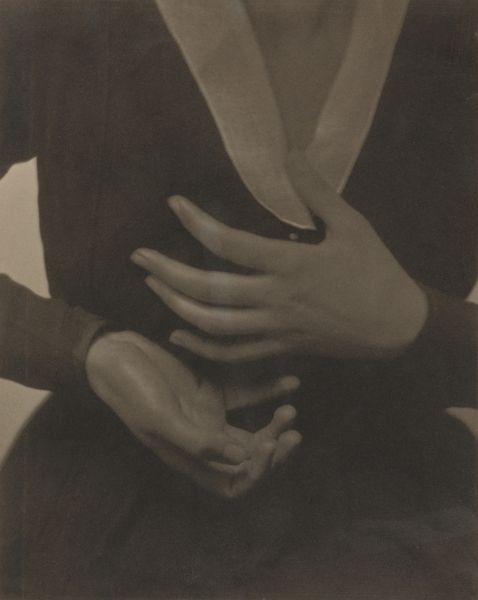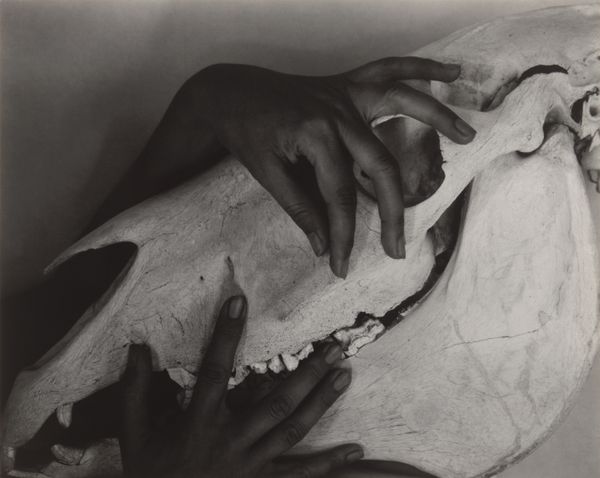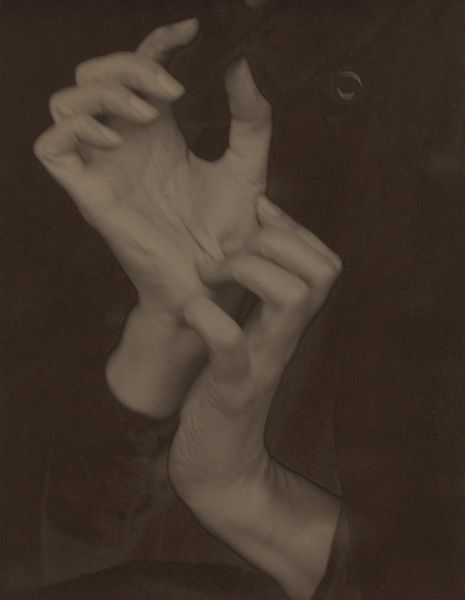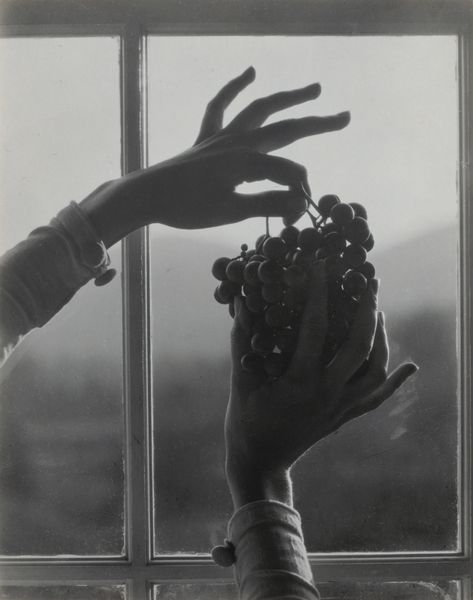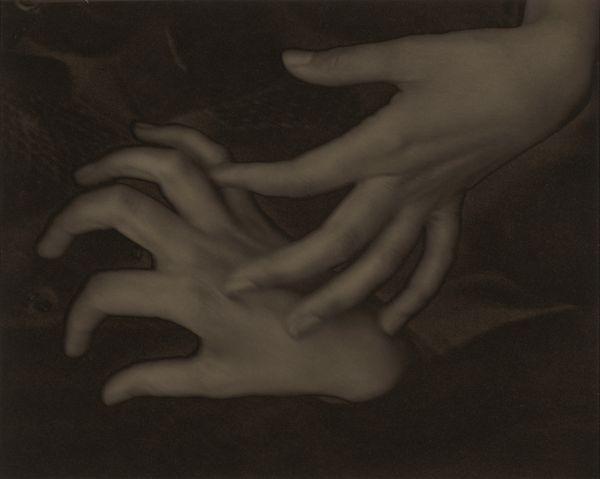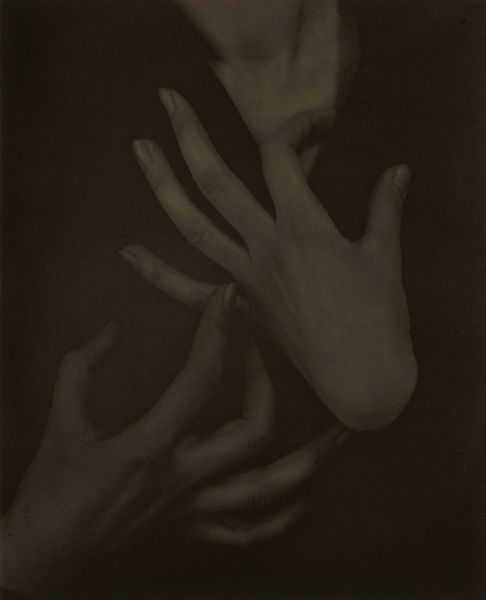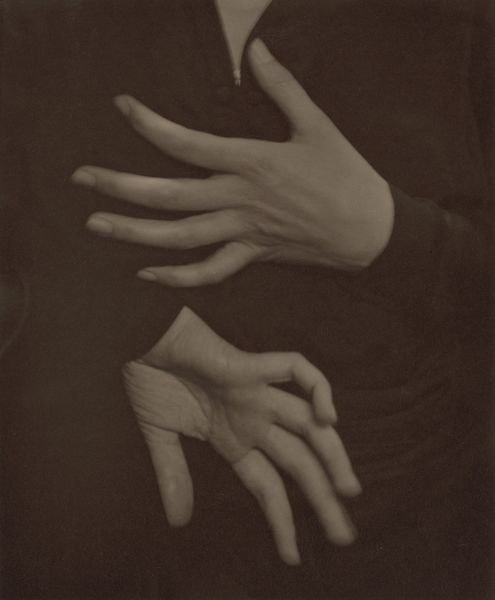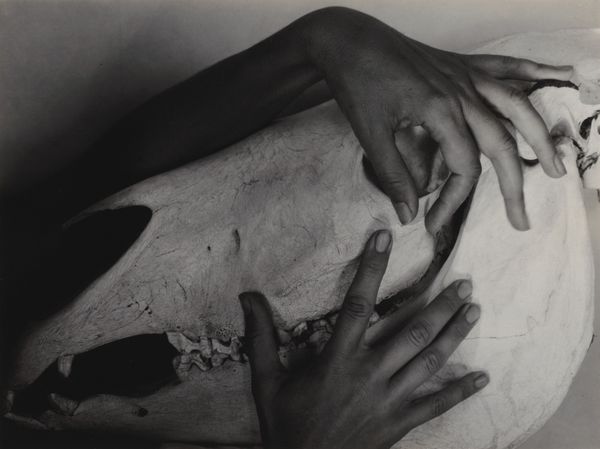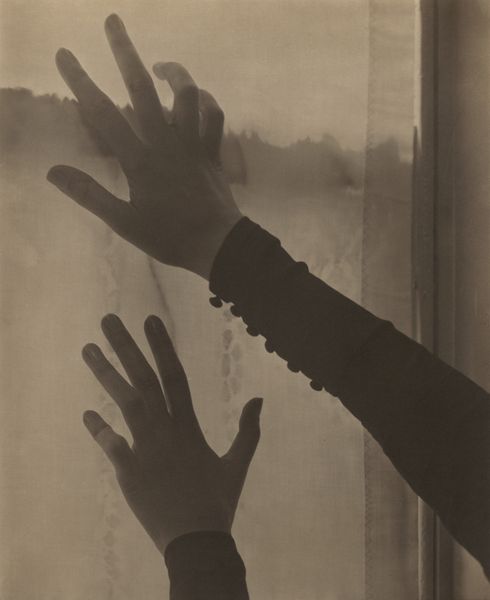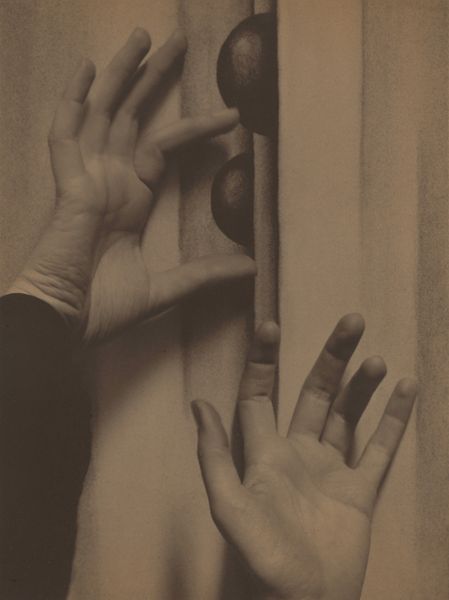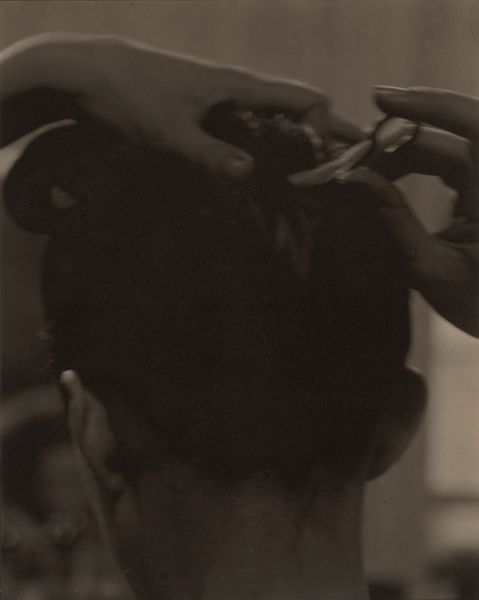
photography
#
portrait
#
still-life-photography
#
photography
#
intimism
#
geometric
#
abstraction
#
modernism
Dimensions: image: 23.9 x 19.1 cm (9 7/16 x 7 1/2 in.) sheet: 25.3 x 20.2 cm (9 15/16 x 7 15/16 in.) mat: 55.8 x 45.5 cm (21 15/16 x 17 15/16 in.)
Copyright: National Gallery of Art: CC0 1.0
Curator: This is Alfred Stieglitz’s photograph, "Georgia O'Keeffe—Hands and Grapes," taken in 1921. Editor: It's strikingly intimate. The soft focus and close cropping draw you into the scene—a woman’s hands cupping a bounty of grapes against the creamy folds of fabric. It's almost tactile. Curator: Stieglitz made this photograph within a larger project, a series of portraits of O'Keeffe, who was both his wife and muse. These works significantly shaped her public image and contributed to his reputation as a champion of modernism in America. Editor: Right. It's impossible to ignore the gaze at play here. Stieglitz photographing O’Keeffe creates a dialogue of power, sexuality, and objectification, particularly given the art world's historical treatment of women artists and subjects. The grapes become almost symbolic of fertility and abundance, viewed through his lens. Curator: I agree, the photograph is deeply entwined with their personal and professional relationship, and reflects the prevailing art world dynamics of that time. Beyond that context, it's interesting to consider the formal elements Stieglitz employed. Notice how he plays with light and shadow. He creates almost a sculptural form with O’Keeffe’s hands. Editor: True. And those hands, cradling the grapes…are they protective? Offering? I'm struck by the vulnerability, not just of the subject, but also conveyed through the seemingly fleeting moment that was captured. Curator: Exactly. And Stieglitz positions this intimate moment within a broader discourse of modern art. The simplification of form and focus on raw emotion aligns with modernist ideals of stripping away the superfluous to reveal essential truths. Editor: Perhaps, but what truth is he revealing? The artist’s intention is only one facet. Considering the cultural moment – the rise of mass media and the commodification of the female image – the image contributes to a narrative shaped by consumer culture. Curator: So, you’re highlighting the multifaceted nature of images like these…how it functions in the art historical canon, how it operates in culture at large. Editor: Precisely. It compels us to think about not only what we see, but how we are positioned to see it. Curator: Thank you. Food for thought, indeed. Editor: As always.
Comments
No comments
Be the first to comment and join the conversation on the ultimate creative platform.
